Module 4: OOP in Java. Script D.
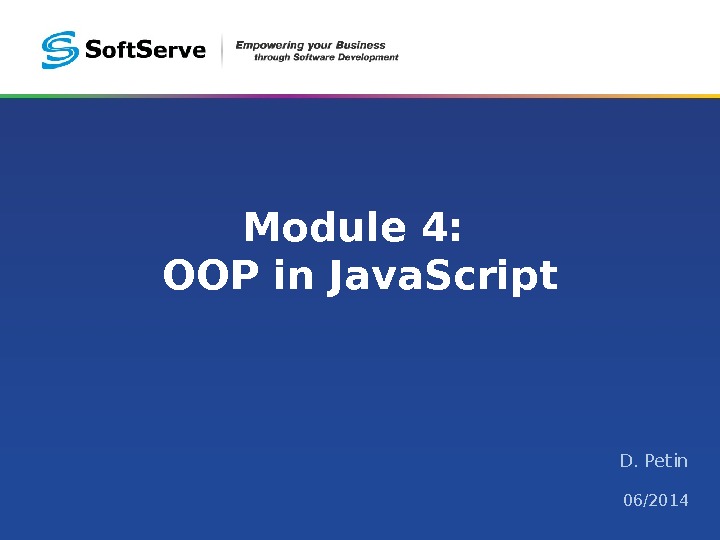
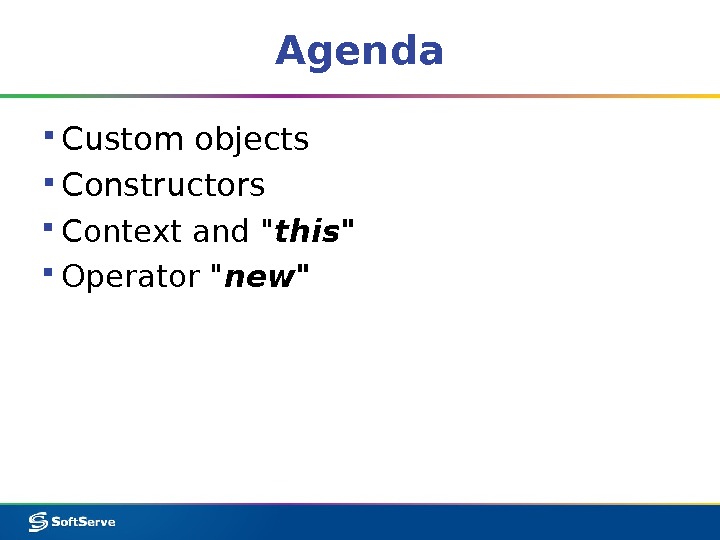

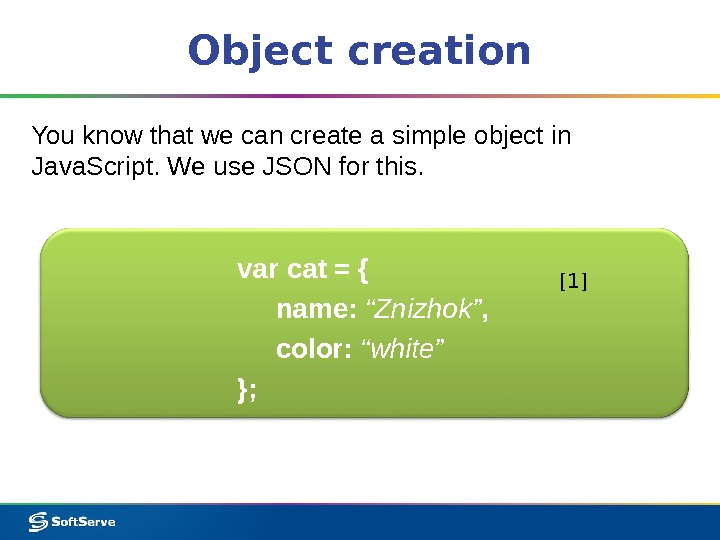
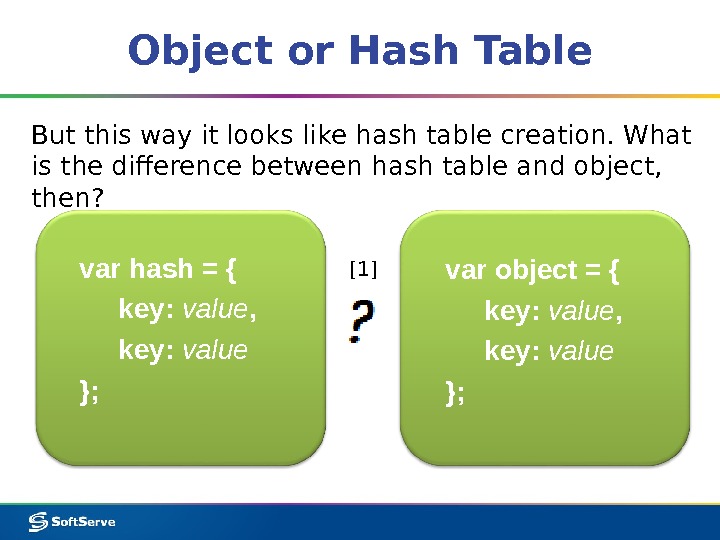

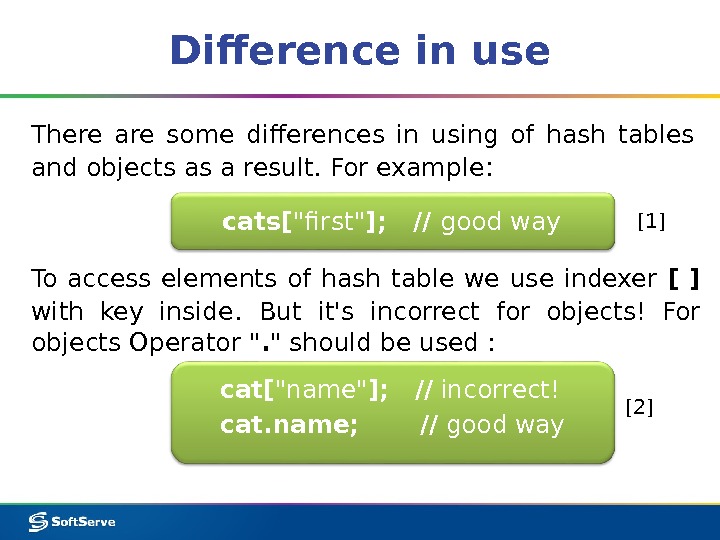



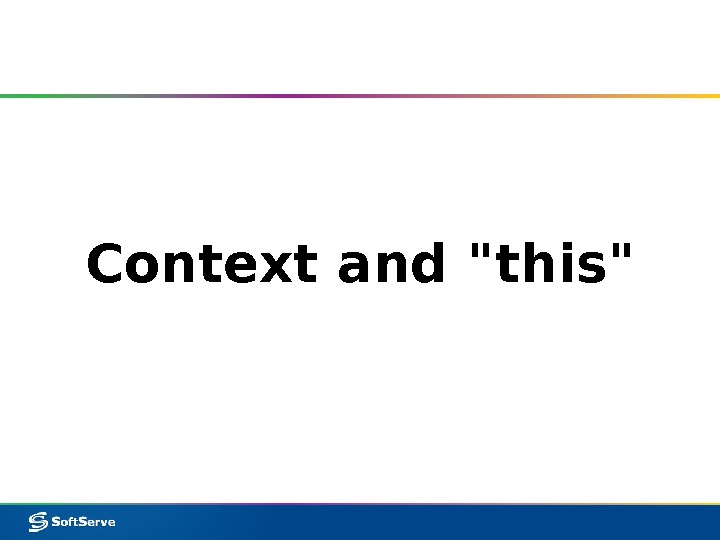
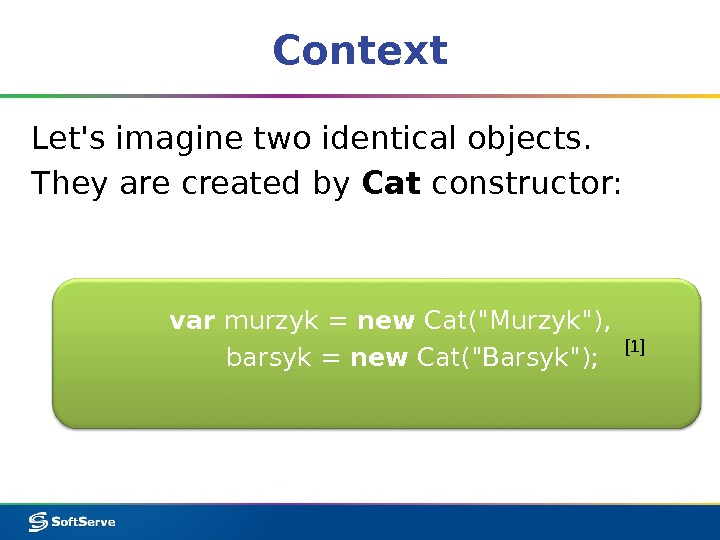

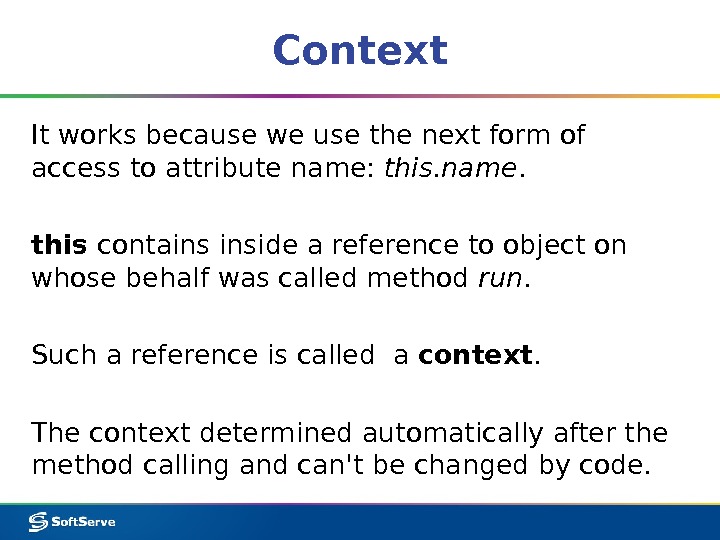


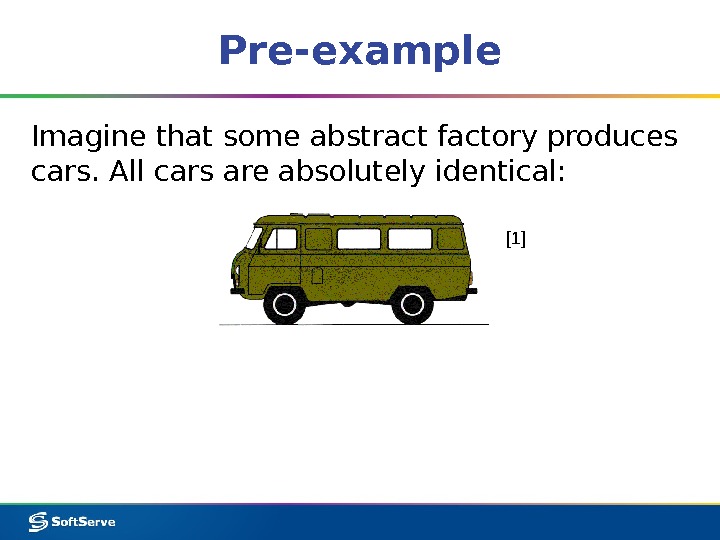

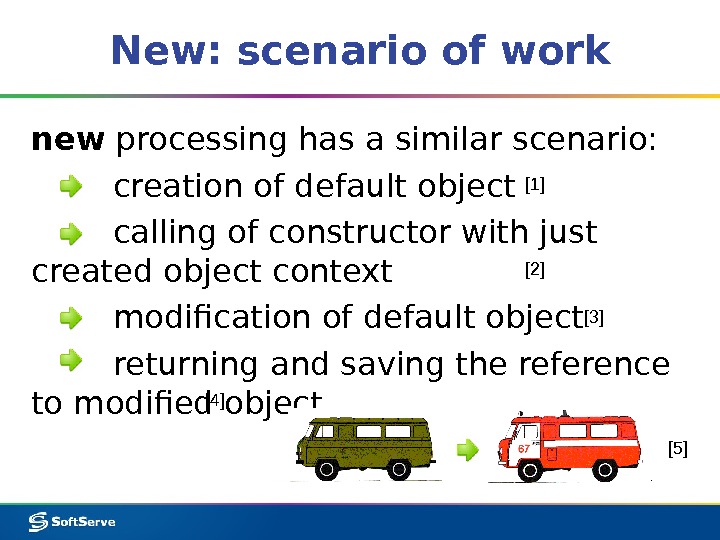
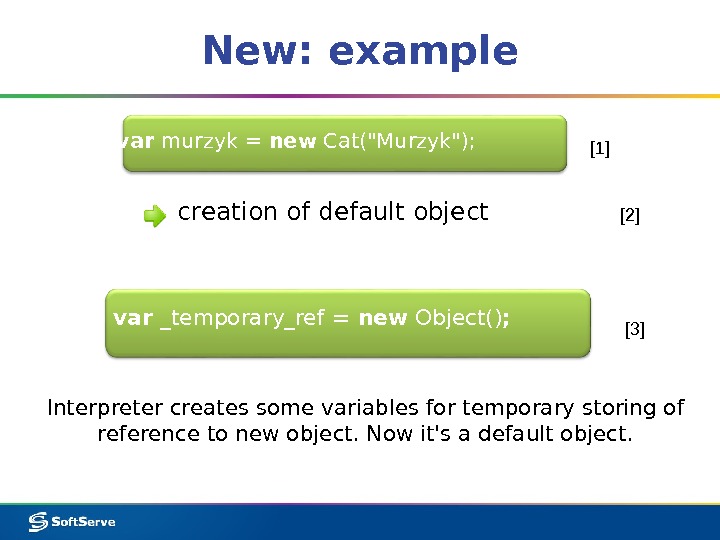
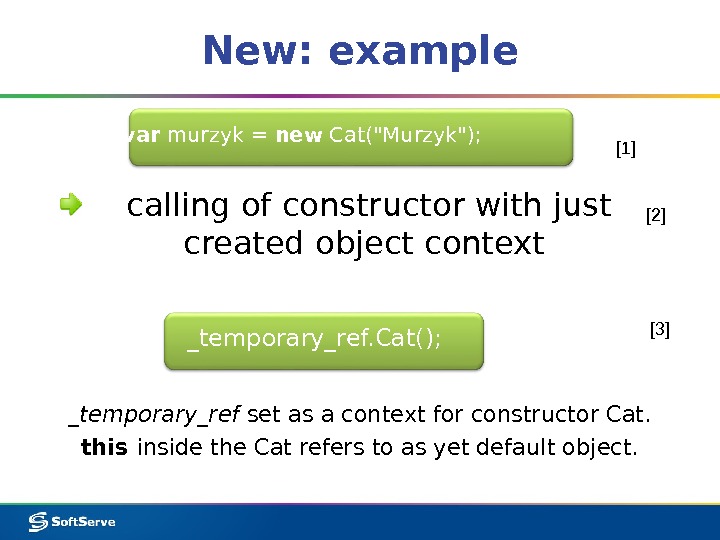

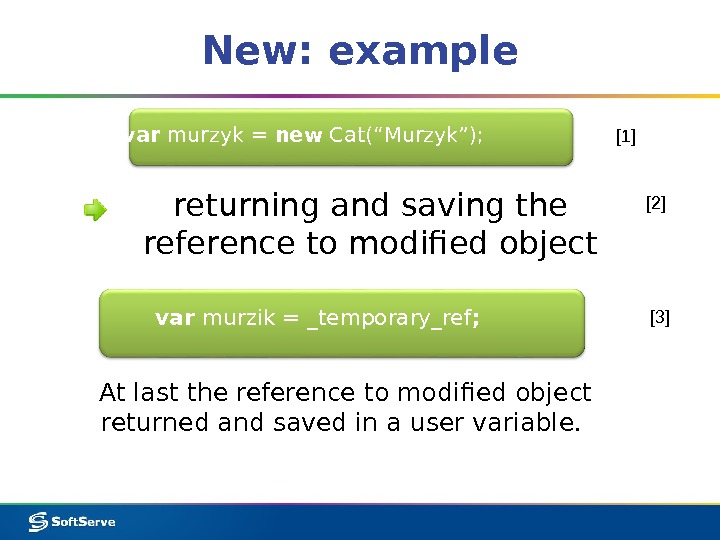

- Размер: 1.2 Mегабайта
- Количество слайдов: 24
Описание презентации Module 4: OOP in Java. Script D. по слайдам
 Module 4: OOP in Java. Script D. Petin 06/
Module 4: OOP in Java. Script D. Petin 06/
 Agenda ▪ Custom objects ▪ Constructors ▪ Context and » this» ▪ Operator » new»
Agenda ▪ Custom objects ▪ Constructors ▪ Context and » this» ▪ Operator » new»
 Custom Object
Custom Object
 Object creation You know that we can create a simple object in Java. Script. We use JSON for this. var cat = { name: “Znizhok” , color: “white” }; [1]
Object creation You know that we can create a simple object in Java. Script. We use JSON for this. var cat = { name: “Znizhok” , color: “white” }; [1]
 Object or Hash Table But this way it looks like hash table creation. What is the difference between hash table and object, then? var hash = { key: value , key: value }; var object = { key: value , key: value }; [1]
Object or Hash Table But this way it looks like hash table creation. What is the difference between hash table and object, then? var hash = { key: value , key: value }; var object = { key: value , key: value }; [1]
 Object or Hash Table Typically we use hash table if we want to represent some collection, and we use an object to describe some system or entity. var cats = { first: murzyk , second: barsyk }; var cat = { name: barsik , color: white }; [1]
Object or Hash Table Typically we use hash table if we want to represent some collection, and we use an object to describe some system or entity. var cats = { first: murzyk , second: barsyk }; var cat = { name: barsik , color: white }; [1]
 Difference in use There are some differences in using of hash tables and objects as a result. For example : cats[ «first» ]; // good way cat[ «name» ]; // incorrect! cat. name; // good way. To access elements of hash table we use indexer [ ] with key inside. But it’s incorrect for objects! For objects Operator «. » should be used : [1] [2]
Difference in use There are some differences in using of hash tables and objects as a result. For example : cats[ «first» ]; // good way cat[ «name» ]; // incorrect! cat. name; // good way. To access elements of hash table we use indexer [ ] with key inside. But it’s incorrect for objects! For objects Operator «. » should be used : [1] [2]
 Constructors
Constructors
 Constructors Sometimes we need to create more than one single object. It is not a good idea to use the literal way for this. It will be better create a scenario for objects reproducing. Constructor is a function that implements this scenario in Java. Script. Constructor consists of declaration attributes and methods that should be added into each new object with presented structure.
Constructors Sometimes we need to create more than one single object. It is not a good idea to use the literal way for this. It will be better create a scenario for objects reproducing. Constructor is a function that implements this scenario in Java. Script. Constructor consists of declaration attributes and methods that should be added into each new object with presented structure.
 Constructors: example function Cat (name) { this. name = name; this. run = function () { console. log(this. name + » run!»); }; return this; } var murzyk = new Cat(«Murzyk»); [1] [2]
Constructors: example function Cat (name) { this. name = name; this. run = function () { console. log(this. name + » run!»); }; return this; } var murzyk = new Cat(«Murzyk»); [1] [2]
 Context and » this «
Context and » this «
 Context Let’s imagine two identical objects. They are created by Cat constructor: var murzyk = new Cat(«Murzyk»), barsyk = new Cat(«Barsyk»); [1]
Context Let’s imagine two identical objects. They are created by Cat constructor: var murzyk = new Cat(«Murzyk»), barsyk = new Cat(«Barsyk»); [1]
 Context If we call method run() for both cats, we’ll take correct results: murzyk. run(); barzyk. run(); In console: Murzyk run! In console: Barsyk run! How does the interpreter distinguish whose name should be printed? [1]
Context If we call method run() for both cats, we’ll take correct results: murzyk. run(); barzyk. run(); In console: Murzyk run! In console: Barsyk run! How does the interpreter distinguish whose name should be printed? [1]
 Context It works because we use the next form of access to attribute name: this. name. this contains inside a reference to object on whose behalf was called method run. Such a reference is called a context. The context determined automatically after the method calling and can’t be changed by code.
Context It works because we use the next form of access to attribute name: this. name. this contains inside a reference to object on whose behalf was called method run. Such a reference is called a context. The context determined automatically after the method calling and can’t be changed by code.
 Loss of context Be careful! There are situations when you can lose a context. For example: set. Timeout( murzyk. run, delay ); In console: undefined run! murzyk. run is a reference to method. And only reference was saved in set. Timeout. When the method was called by saved reference, object window will be used as a context and this. name (equal to window. name ) was not found. [1]
Loss of context Be careful! There are situations when you can lose a context. For example: set. Timeout( murzyk. run, delay ); In console: undefined run! murzyk. run is a reference to method. And only reference was saved in set. Timeout. When the method was called by saved reference, object window will be used as a context and this. name (equal to window. name ) was not found. [1]
 Operator new
Operator new
![Pre-example Imagine that some abstract factory produces cars. All cars are absolutely identical: [1] Pre-example Imagine that some abstract factory produces cars. All cars are absolutely identical: [1]](/docs//module_4_oop_-_first_touch_images/module_4_oop_-_first_touch_16.jpg) Pre-example Imagine that some abstract factory produces cars. All cars are absolutely identical: [1]
Pre-example Imagine that some abstract factory produces cars. All cars are absolutely identical: [1]
 Pre-example But there are some emergency services and each of them has an own color scheme for a car: [1]
Pre-example But there are some emergency services and each of them has an own color scheme for a car: [1]
 New: scenario of work new processing has a similar scenario: creation of default object calling of constructor with just created object context modification of default object returning and saving the reference to modified object [1] [2] [3] [4] [5]
New: scenario of work new processing has a similar scenario: creation of default object calling of constructor with just created object context modification of default object returning and saving the reference to modified object [1] [2] [3] [4] [5]
 New: example creation of default objectvar murzyk = new Cat(«Murzyk»); var _ temporary_ref = new Object() ; Interpreter creates some variables for temporary storing of reference to new object. Now it’s a default object. [1] [2] [3]
New: example creation of default objectvar murzyk = new Cat(«Murzyk»); var _ temporary_ref = new Object() ; Interpreter creates some variables for temporary storing of reference to new object. Now it’s a default object. [1] [2] [3]
 New: example calling of constructor with just created object context var murzyk = new Cat(«Murzyk»); _temporary_ref. Cat(); _temporary_ref set as a context for constructor Cat. this inside the Cat refers to as yet default object. [1] [2] [3]
New: example calling of constructor with just created object context var murzyk = new Cat(«Murzyk»); _temporary_ref. Cat(); _temporary_ref set as a context for constructor Cat. this inside the Cat refers to as yet default object. [1] [2] [3]
 New: example modification of default object var murzyk = new Cat(«Murzyk»); this. name = » Murzyk » ; this. run = function () {. . . }; Interpreter extends the default object inside the constructor. If a key is not found, it will be created, as it occurs with hashes and arrays. [1] [2] [3]
New: example modification of default object var murzyk = new Cat(«Murzyk»); this. name = » Murzyk » ; this. run = function () {. . . }; Interpreter extends the default object inside the constructor. If a key is not found, it will be created, as it occurs with hashes and arrays. [1] [2] [3]
 New: example returning and saving the reference to modified objectvar murzyk = new Cat(“Murzyk”); var murzik = _temporary_ref ; At last the reference to modified object returned and saved in a user variable. [1] [2] [3]
New: example returning and saving the reference to modified objectvar murzyk = new Cat(“Murzyk”); var murzik = _temporary_ref ; At last the reference to modified object returned and saved in a user variable. [1] [2] [3]

